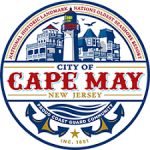COURT HOUSE – A local task force focused on controlling invasive plants that damage native habitats is celebrating success as demonstrated by an ongoing forest restoration project at Cape May Point State Park.
Since 2010, New Jersey Audubon has coordinated a growing number of partners to better address the impacts of non-native invasive plants in Cape May County. This unique partnership is called the Cape May Habitat Restoration Task Force (the Task Force) and aims to bring community members together to prevent, control, and eradicate these harmful plant invaders. Task Force members include state and federal agencies, nonprofit conservation groups, local municipalities, and individuals.
The members of the Task Force have worked to reverse the damage invasive plants have on the area’s most critical habitats. One effort includes a 5.5-acre forest restoration site along Seagrove Avenue in Cape May Point State Park. This unique forest supports rare and declining wildlife species, but by 2010 invasive vines, shrubs, and herbaceous plants had taken their toll. The trees were blanketed by invasive clematis and porcelain-berry vines, the shrub layer consisted of invasive privet and multiflora rose, and the ground was covered in invasive garlic mustard. Beginning in 2011, New Jersey Audubon, the staff at Cape May Point State Park, and the Task Force pulled their resources together and began restoring this critical habitat. The restoration involved a wide array of tools and techniques, including forestry mowing equipment; volunteers who hand-pulled weeds; and targeted herbicide applications.
A non-native invasive plant is one that has been introduced to an area either intentionally or accidentally, and has advantages that allow it to out-compete native plants in the new locale. These competitive advantages can include a lack of predators or diseases that affect them in the new location; the ability to change soil chemistry and slow other species’ growth; the ability to produce more seed, begin growing earlier in the season, or keep growing later in the season than other plants; and in the case of many vines, the ability to climb over other native plants, shading them out completely.
“When the structure and make-up of a plant community changes drastically, there will be an effect on the wildlife species that use that area,” says Kristen Meistrell, Stewardship Specialist at New Jersey Audubon. “Once the habitat shifts from a diverse mix of plant species to a monoculture of few invasive ones, resources for wildlife become limited.”
As of September 2014, over 500 species of non-native invasive plants have been recorded in New Jersey. In Cape May County alone, a staggering 427 species have been recorded, and this number continues to rise. In Cape May County, these invasive plants threaten thousands of acres of habitat that support several rare, common, and imperiled wildlife. Cape May County provides critical breeding, wintering, and stop-over habitat for a wide range of songbirds, shorebirds, raptors, and waterfowl throughout the year. The area also supports migrating monarch butterflies and breeding populations of amphibians including the eastern tiger salamander and Cope’s gray tree frog.
“Invasive species transform ecosystems, and not for the better,” explains Susan Brookman, the Executive Director of the New Jersey Invasive Species Strike Team (NJISST) and a partner in the Task Force. “Whether they change soil chemistry, out-compete native species for habitat and food, or cause disease, invasive species wreak havoc.”
An extreme shift in habitat can affect food resources for wildlife, even impacting the insect populations that are an important source of food for birds to feed their young, explains Evelyn Lovitz, chair of the Cape May City Environmental Commission, a member of the Task Force.
The Seagrove Avenue project is currently in its third year, and the forest is already beginning to show great progress. Invasive plant cover has been reduced, and a mix of native trees, shrubs, and wildflowers are developing, responding to the newly available sunlight and reduced competition from invasive vines. Although the project will still require years of follow-up work, birds, butterflies, reptiles, and amphibians appear to be reaping the benefits of the restored plant community.
Adrianna Zito-Livingston, Cape May Preserves Coordinator with The Nature Conservancy, is “pleased to be a part of the Task Force to control invasive threats on protected land. The Seagrove Avenue project shows us how quickly consistent invasive control can improve habitat for wildlife, and is a tangible example of the progress we can achieve working together.”
Speaking of the Task Force, Jean Lynch, Stewardship Project Director for New Jersey Audubon, said, “The members of the Task Force are really showing that with consistency and focus, these invasive species impacts can be managed, even if they look overwhelming.” The Task Force members’ efforts have included control of Phragmites and loosestrife in wetlands, the almost complete eradication of the invasive kudzu vine in West Cape May, and many other efforts on other properties. The members have also promoted preventive steps by educating the community about the value of native plants in landscaping and wildlife habitat. Says Lynch, “The more different segments of the community that are involved, the more successful the effort will be, because each member may have a different strength or resource to contribute.”
New Jersey Audubon and the Task Force consider the Seagrove Avenue project to be a flagship endeavor against non-native invasive plants, but there is still much to be done on all fronts, especially prevention. Many of these harmful plants are still sold and planted throughout the Garden State, posing a constant threat to natural areas like Cape May Point State Park’s maritime forests. While stewardship efforts and public education can contribute to successful restoration, preventative legislature will be a key factor in the fight against invasive plants. New Jersey Audubon is currently supporting several bills recently introduced into the Legislature. One such bill (A1305) will require all state entities to use native vegetation for various planting projects throughout the state. This approach would help minimize the spread of invasive plants by replacing them with native species that serve similar purposes without posing a risk to New Jersey’s critical areas. The bill will also encourage these state entities to purchase native plants from New Jersey businesses, creating a market and demand for locally grown native plants.
Along with measures that directly reduce damages caused by invasive plants, there are also efforts to raise awareness about native plants. Designating June as “Native Plant Appreciation Month” (AJR60) and the Private Wildlife Habitat Certification bill (A3133) all establish a means to educate the public with regards to non-native invasive plants. A3133 particularly addresses resource concerns by establishing a certification program that will encourage the use of native plants in order to provide sources of nectar, seeds, berries, and shelter to wildlife. By providing property owners with an affirmative defense against code violations arising from these backyard habitats, A3133 can create an opportunity to increase native plant cover on private properties throughout the state.
North Wildwood – In the 10-16-24 edition of THE HERALD there was a letter to the editor. It was titled "WHY WOULD YOU EVER VOTE FOR TRUMP?" It went on to say many things about Trump. I would like to see…








